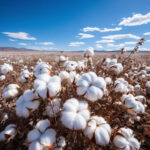The year 2023 was a significant one for millets as it was declared The International Millet Year by the United Nations. This declaration was made at the “Eat Right Summit” in recognition of the efforts of India’s Prime Minister Narendra Modi, who advocated for millets and promoted them as Shri Ann, meaning “grains of respect.” Millets, also known as the “Shri Dhanya” group, include Bajra, Kodra, Kangni, Hari Kangni, Kutki, Sanwa, Jowar, Ragi, and China. These grains have been staple cereals in several states due to their significant nutritious and health benefits.
Nutritional Value and Health Benefits
Millets are highly nutritious and offer numerous health benefits. They are rich in proteins, fiber, vitamins, and minerals, making them an ideal choice for a healthy diet. Millets are also gluten-free, making them suitable for individuals with gluten intolerance or celiac disease. Additionally, millets have a low glycemic index, which helps in managing blood sugar levels and reducing the risk of diabetes.
The International Millet Year
The declaration of The International Millet Year in 2023 aimed to raise awareness about the importance of millets and promote their cultivation and consumption globally. Millets are known for their resilience to drought and other extreme weather conditions, making them a sustainable crop choice. They also require low irrigation and fewer chemical inputs, making them environmentally friendly.

Img Src:-Krishijagaran
Types of Millets
Millets come in various types, each with its unique characteristics and benefits. Some of the popular millet varieties include:
- Bajra: Rich in iron, calcium, and fiber.
- Kodra: High in protein and fiber.
- Kangni: Rich in antioxidants and minerals.
- Hari Kangni: Known for its cooling properties.
- Kutki: Rich in fiber and essential nutrients.
- Sanwa: Gluten-free and rich in fiber.
- Jowar: High in protein and dietary fiber.
- Ragi: Rich in calcium and iron.
- China: Known for its high nutritional value.
Cultivation of Millets
Millets are known for their low irrigation requirements and resilience to pests and diseases, making them an attractive crop for cultivation. Cultivating millets also opens up opportunities for employment and small-scale entrepreneurship, especially in rural areas. Additionally, millets contribute to sustainable agriculture practices and help in conserving water and soil health.
26th Agricultural Scientists & Farmers’ Congress
To further promote the cultivation and consumption of millets, the 26th Agricultural Scientists & Farmers’ Congress is scheduled to be organized in March 2024. This congress aims to discuss the prospects, problems, challenges, and opportunities of millets in India. Some of the central themes of the congress include:
- History of millets: Production to platter journey to global visibility.
- Production and productivity of millets: Cost efficacy and sustainability.
- New research on millets: Scope, opportunities, and technological needs.
- Plant health management and agricultural marketing.
- Post-harvest technology: Processing, machines, and implements.
- Millets for all age groups: Value addition and entrepreneurship.
- Role of millets for farm animals, birds, and fishes.
- Medicinal and wellness benefits from millet consumption.
In conclusion, millets are an important crop with significant nutritional and health benefits. The declaration of The International Millet Year in 2023 and the upcoming 26th Agricultural Scientists & Farmers’ Congress highlight the importance of promoting millets for a sustainable and healthy future.
Click Here For More Latest Information
FAQs:
- What is The International Millet Year?
- The International Millet Year was declared in 2023 by the United Nations to raise awareness about the nutritional value and health benefits of millets.
- What are the health benefits of millets?
- Millets are rich in proteins, fiber, vitamins, and minerals, making them an ideal choice for a healthy diet. They are also gluten-free and have a low glycemic index.
- What are some popular types of millets?
- Some popular types of millets include Bajra, Kodra, Kangni, Hari Kangni, Kutki, Sanwa, Jowar, Ragi, and China. Each type has its unique nutritional profile and benefits.
- Why are millets considered sustainable crops?
- Millets are considered sustainable crops because they require low irrigation, are resilient to pests and diseases, and can grow in harsh environmental conditions.
- What is the objective of the 26th Agricultural Scientists & Farmers’ Congress?
- The 26th Agricultural Scientists & Farmers’ Congress aims to discuss the prospects, problems, challenges, and opportunities of millets in India, promoting their cultivation and consumption.
- How can millets contribute to employment and entrepreneurship?
- Cultivating millets opens up opportunities for employment and small-scale entrepreneurship, especially in rural areas, contributing to sustainable agriculture and economic development.
- Are millets suitable for individuals with gluten intolerance?
- Yes, millets are gluten-free and are suitable for individuals with gluten intolerance or celiac disease.
- What is the role of millets in farm animal and bird diets?
- Millets are also suitable for farm animal and bird diets, providing essential nutrients and promoting overall health.
Also read Below Success Stories In Millet Farming










